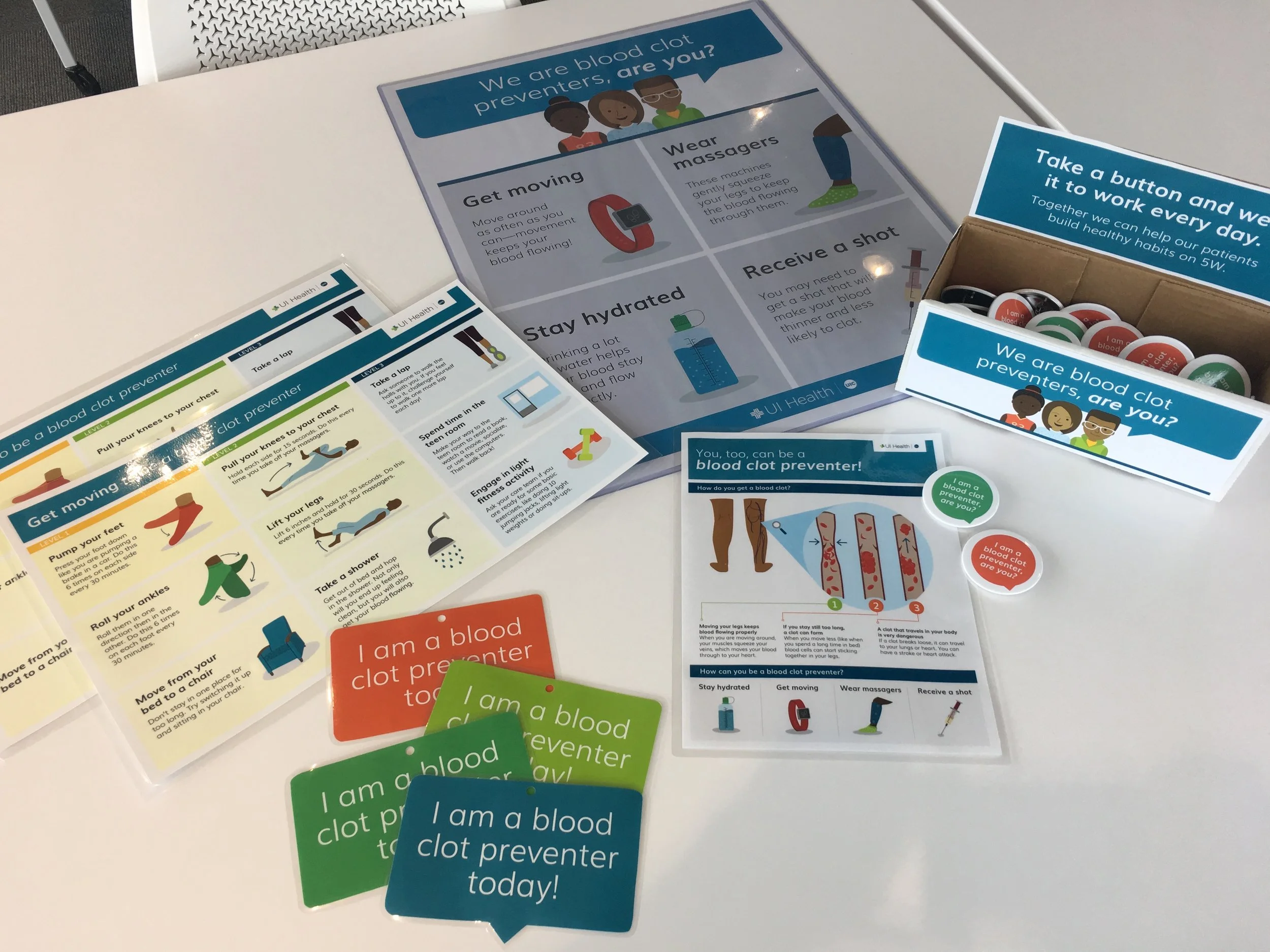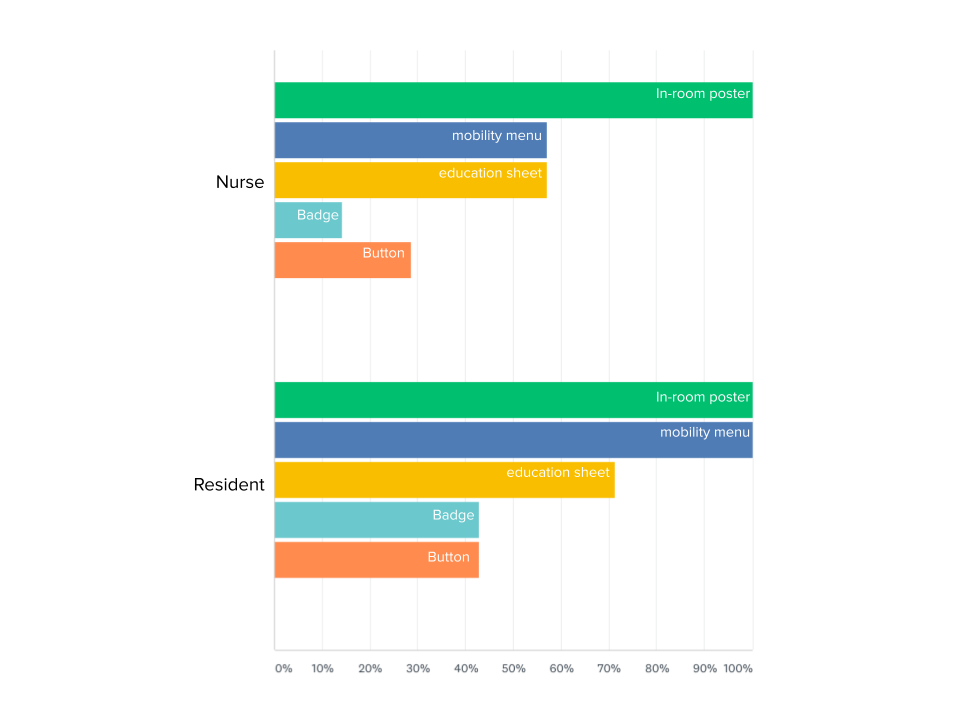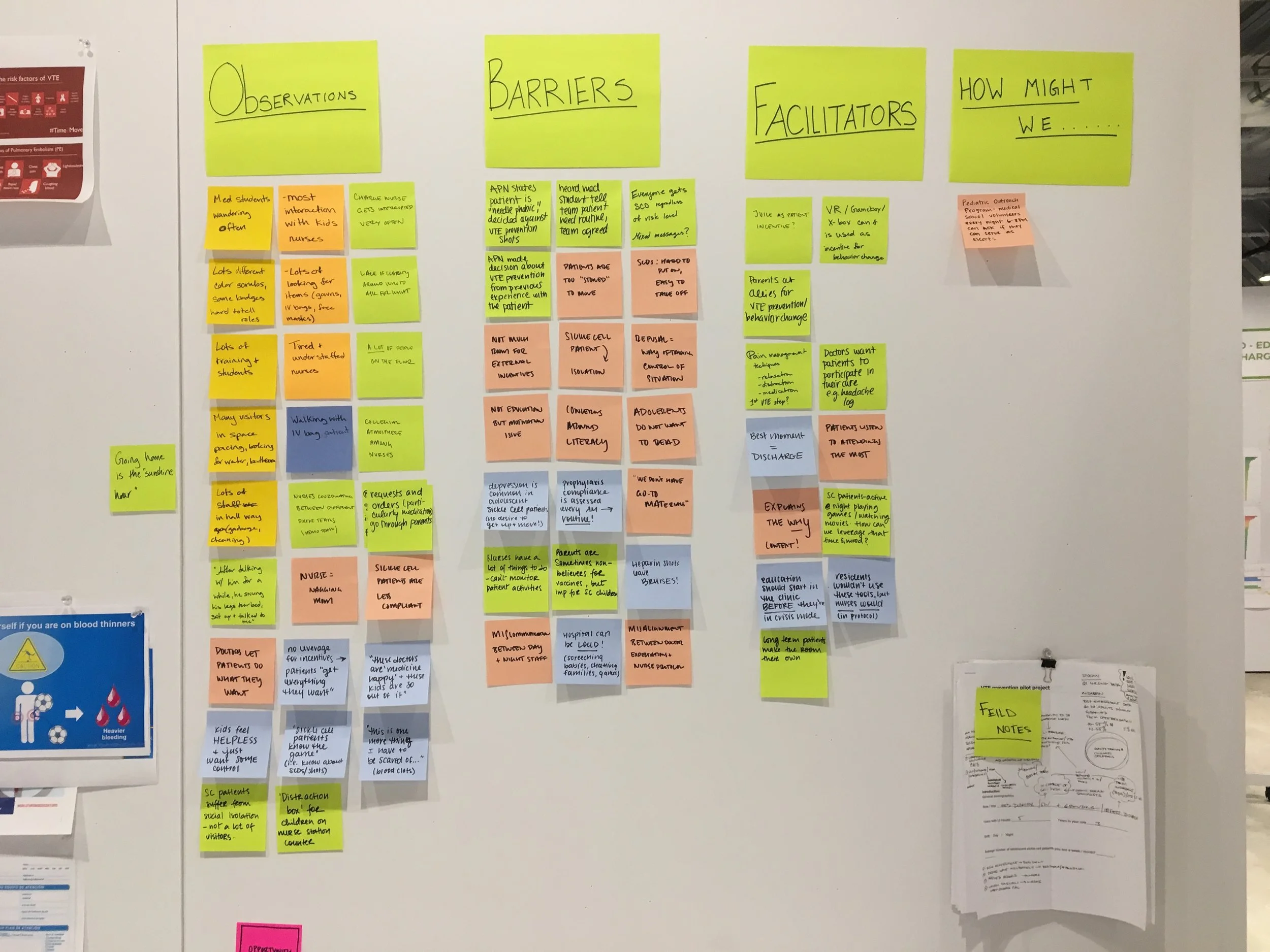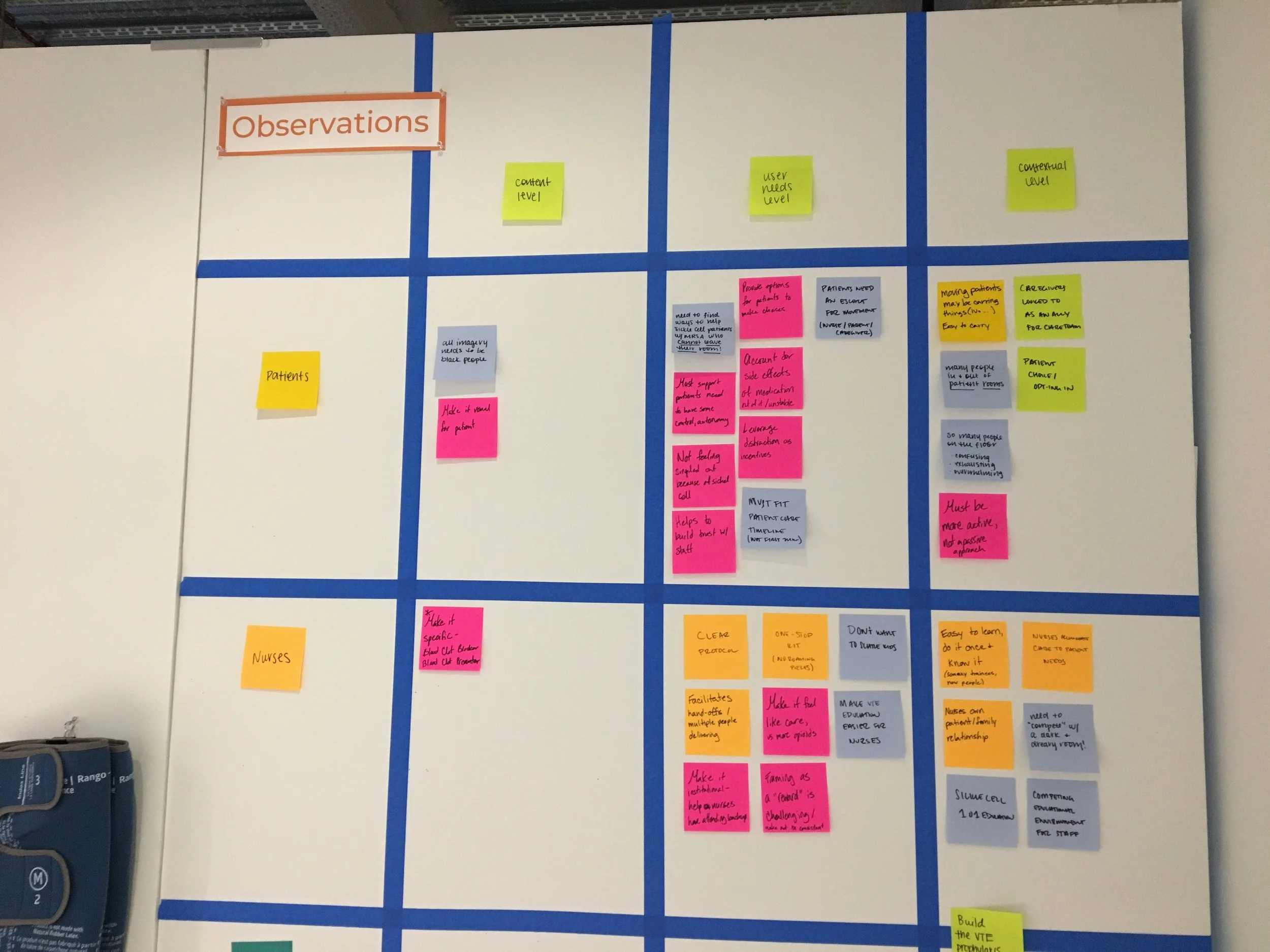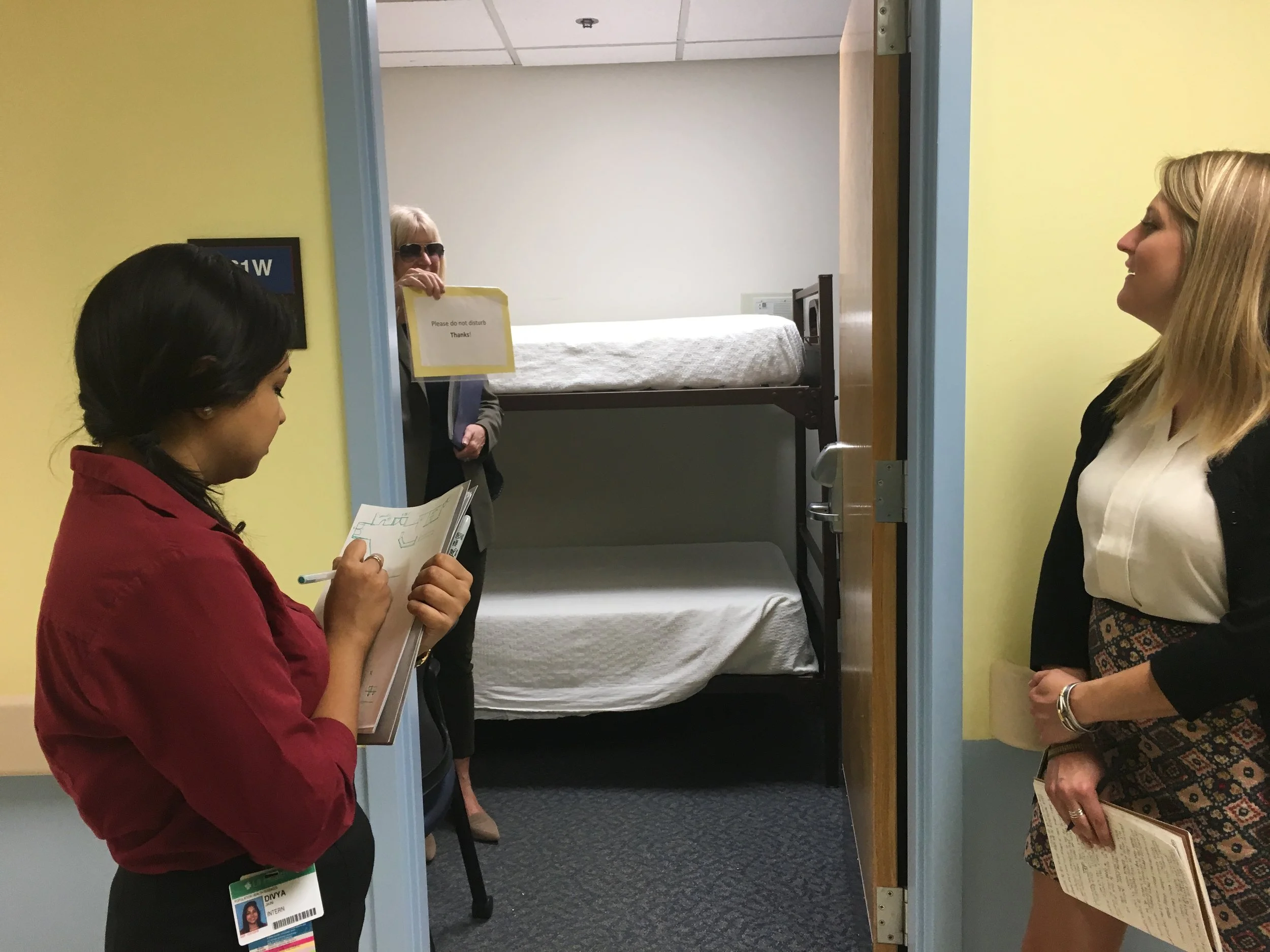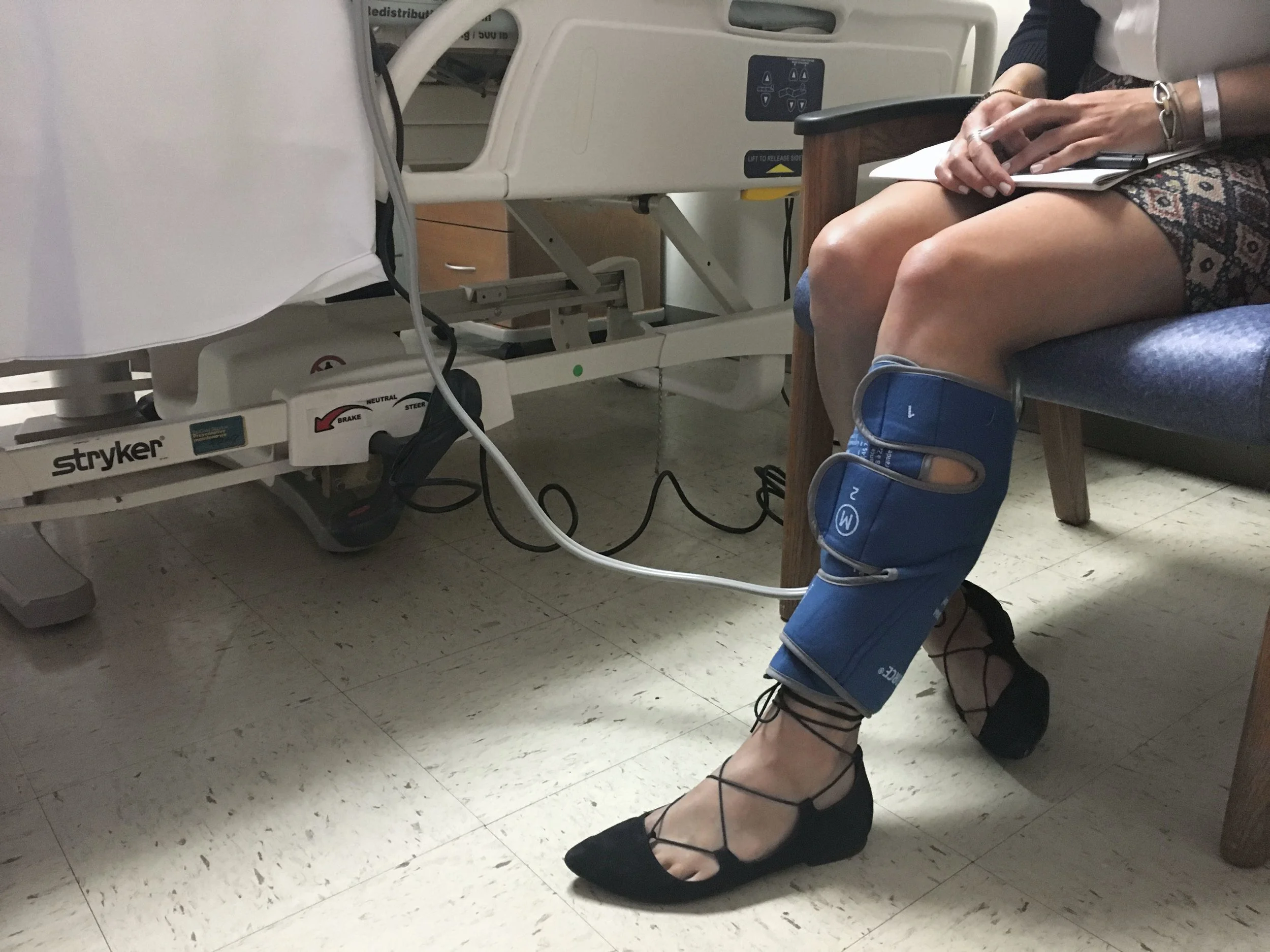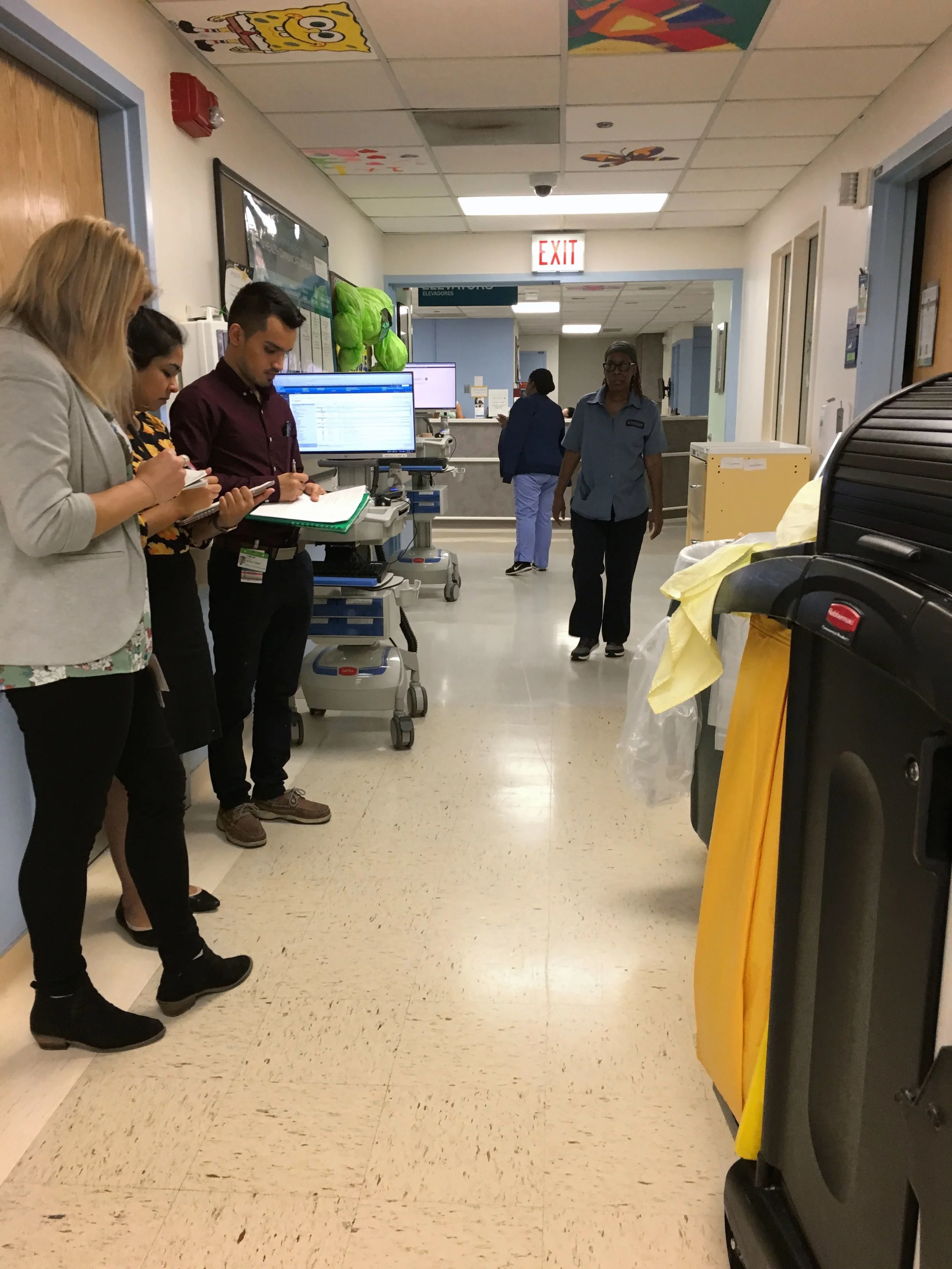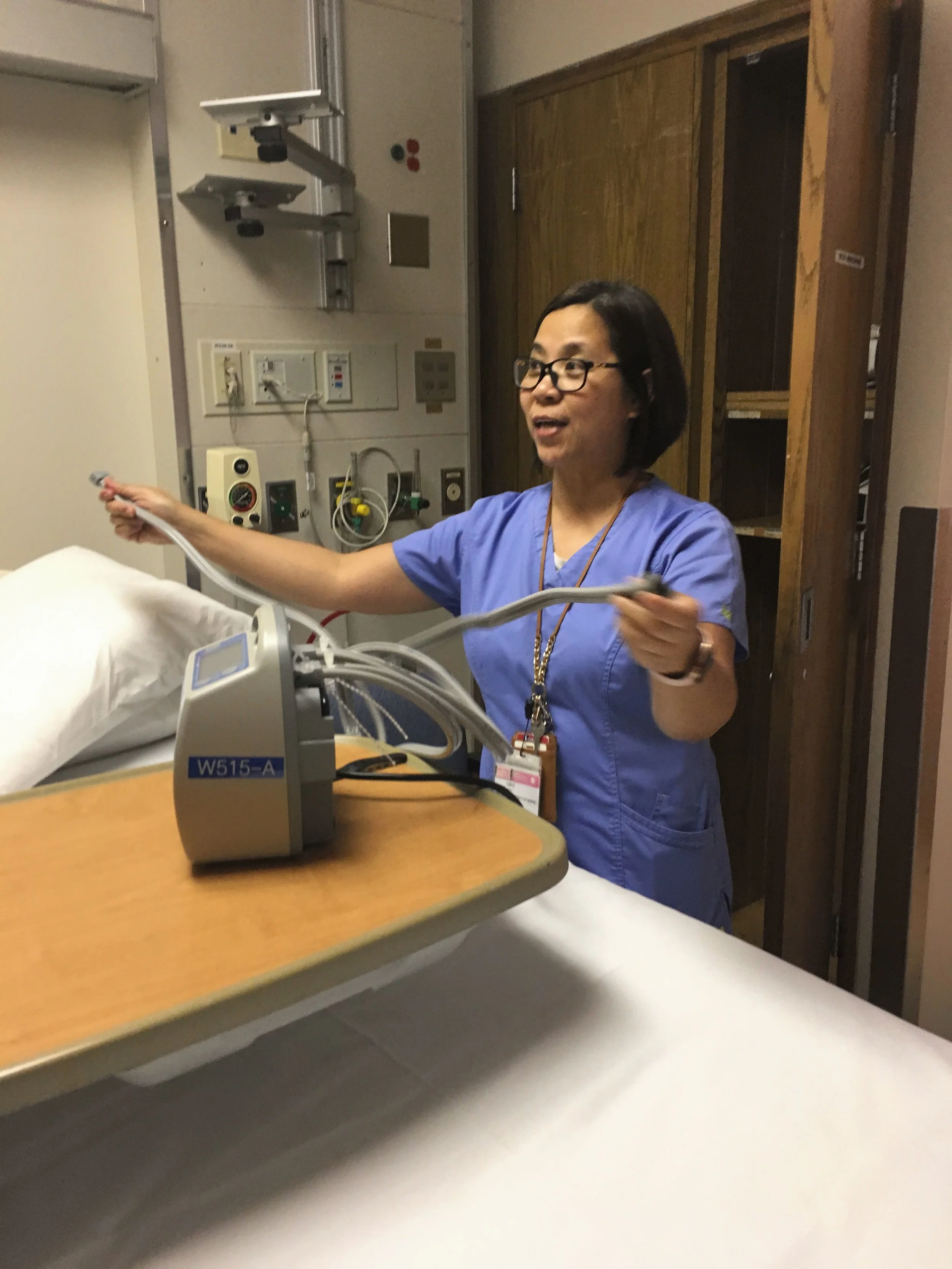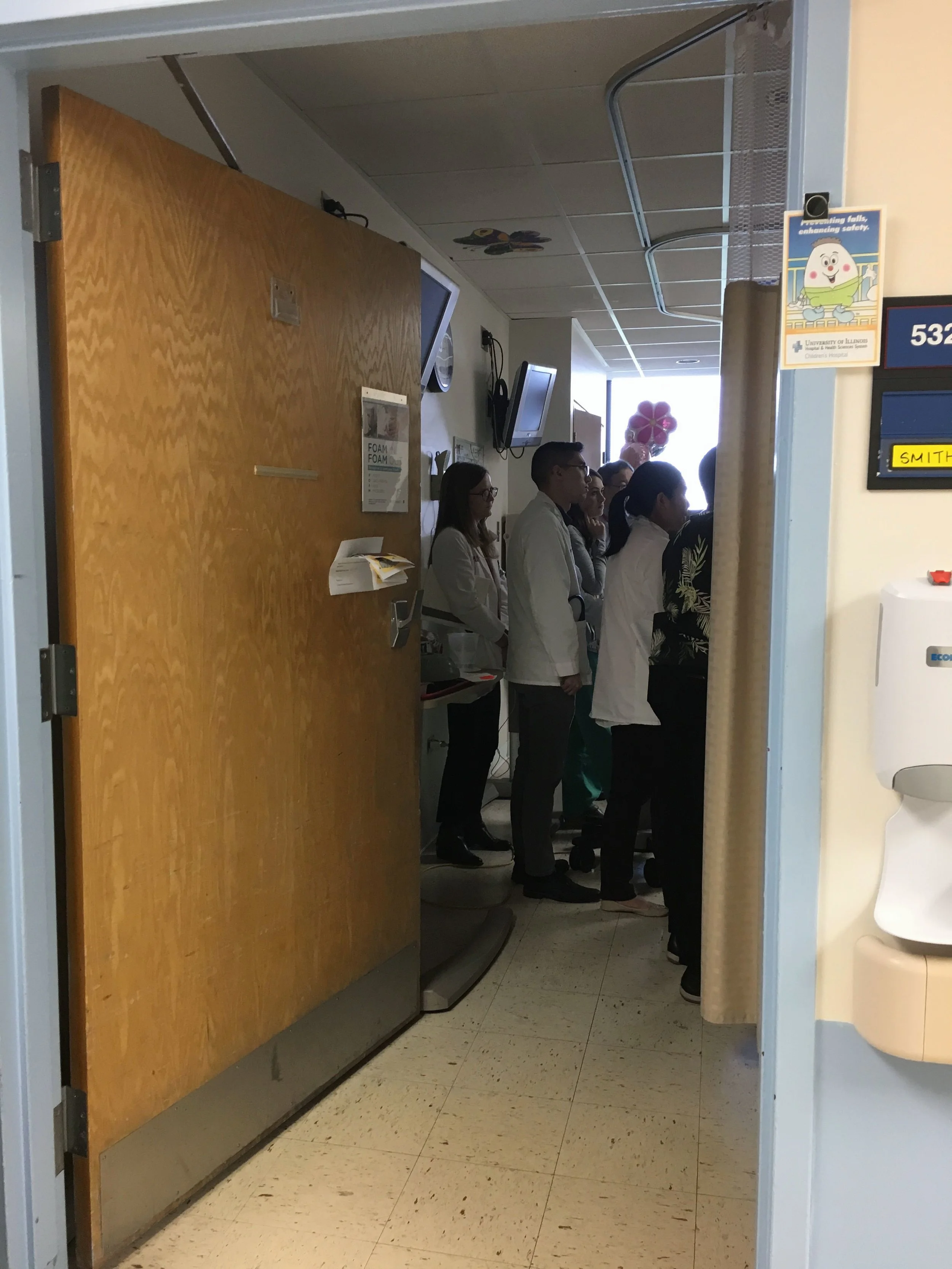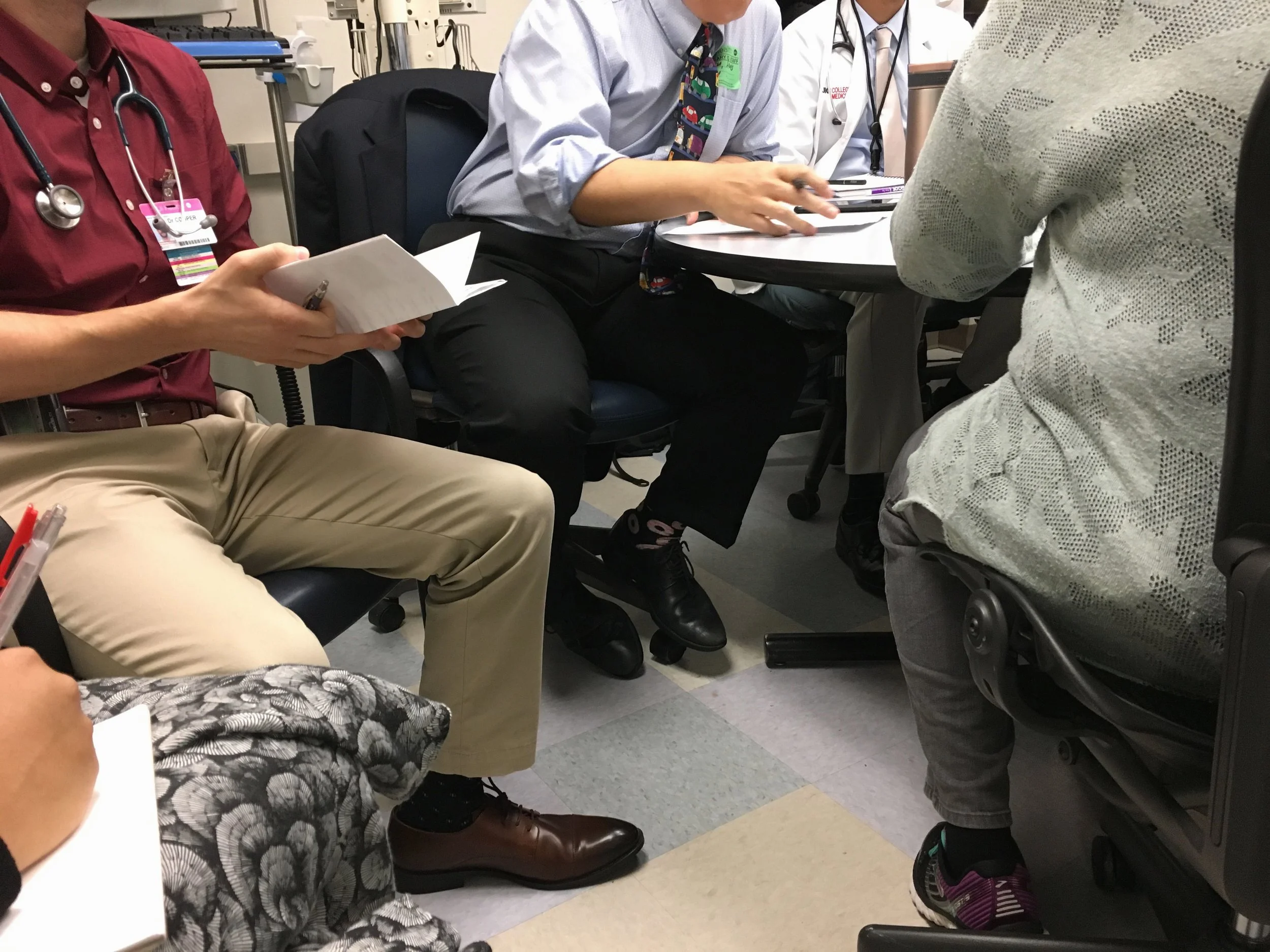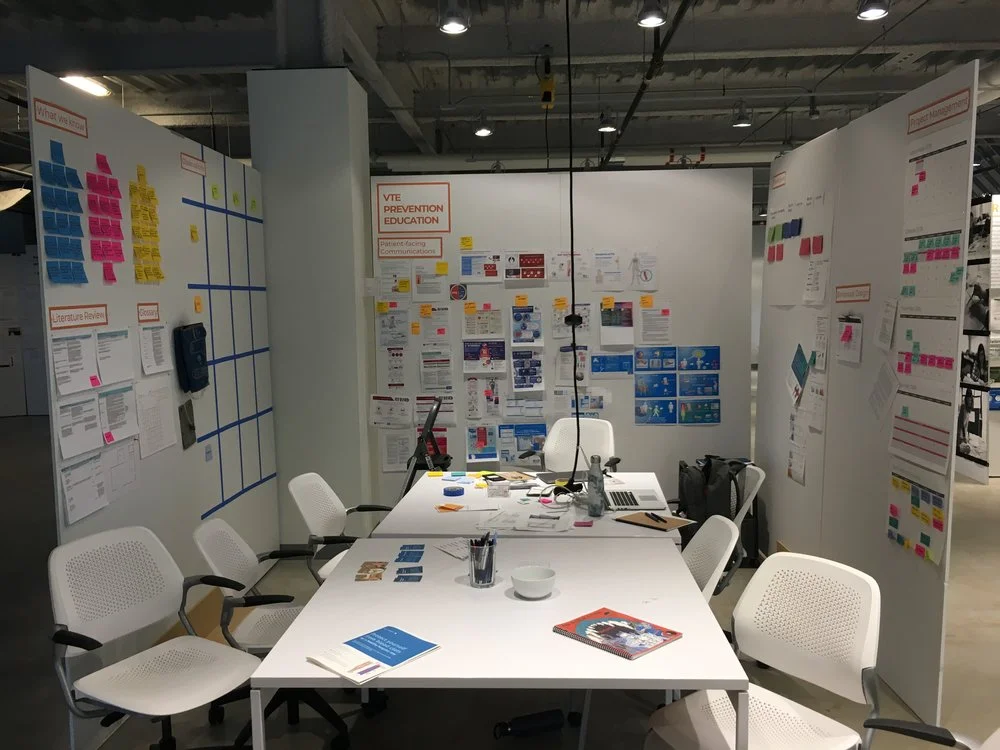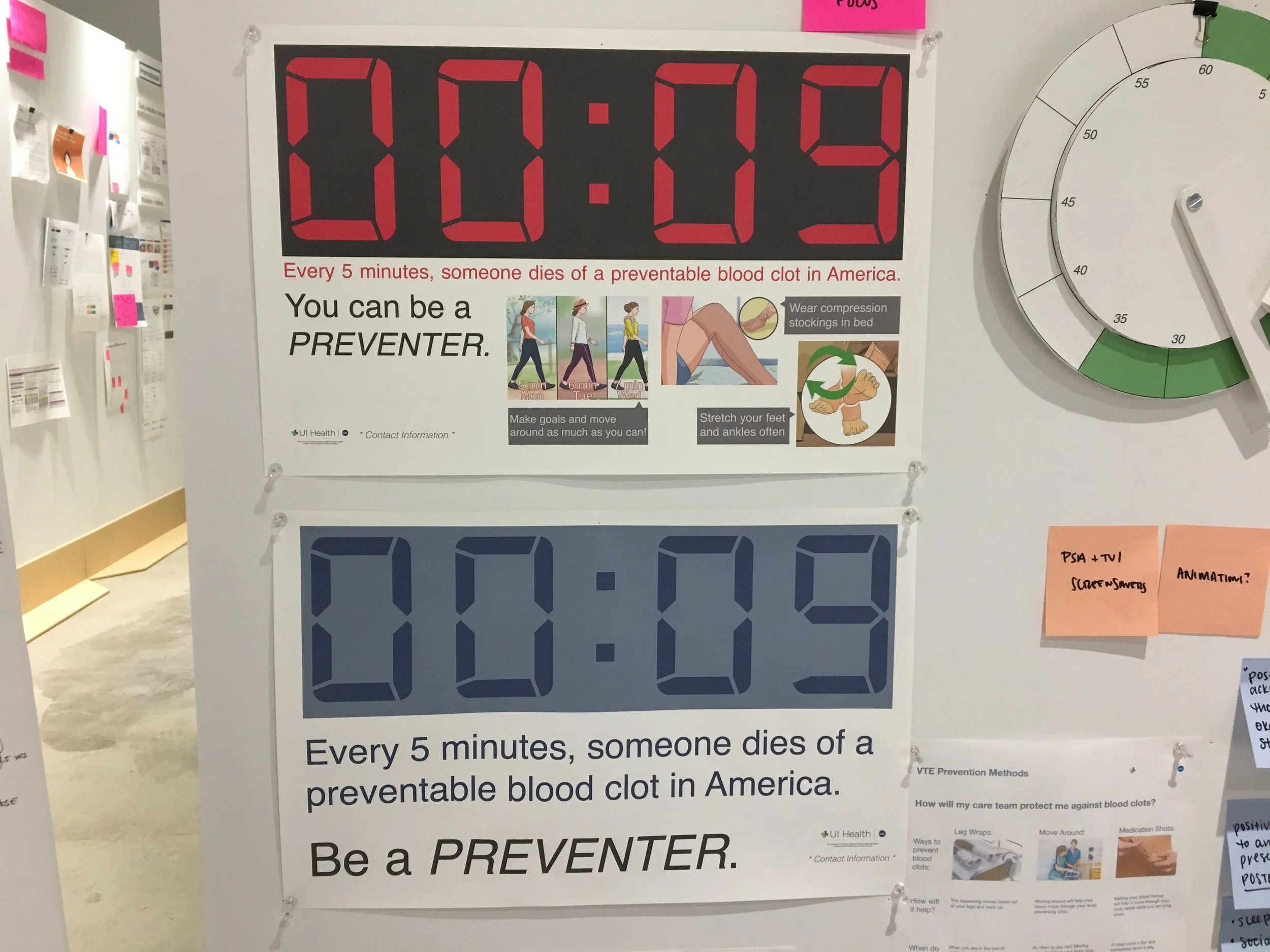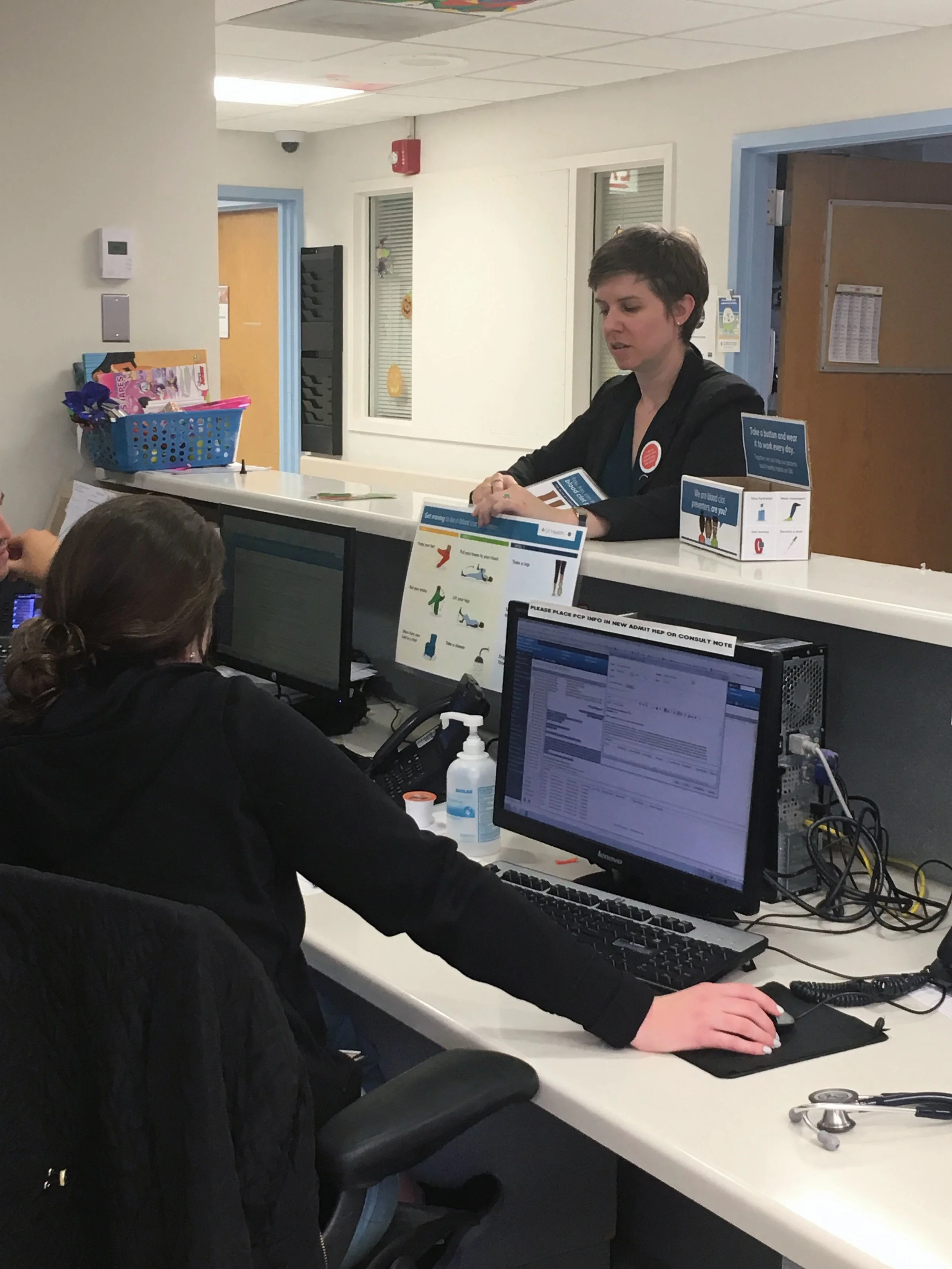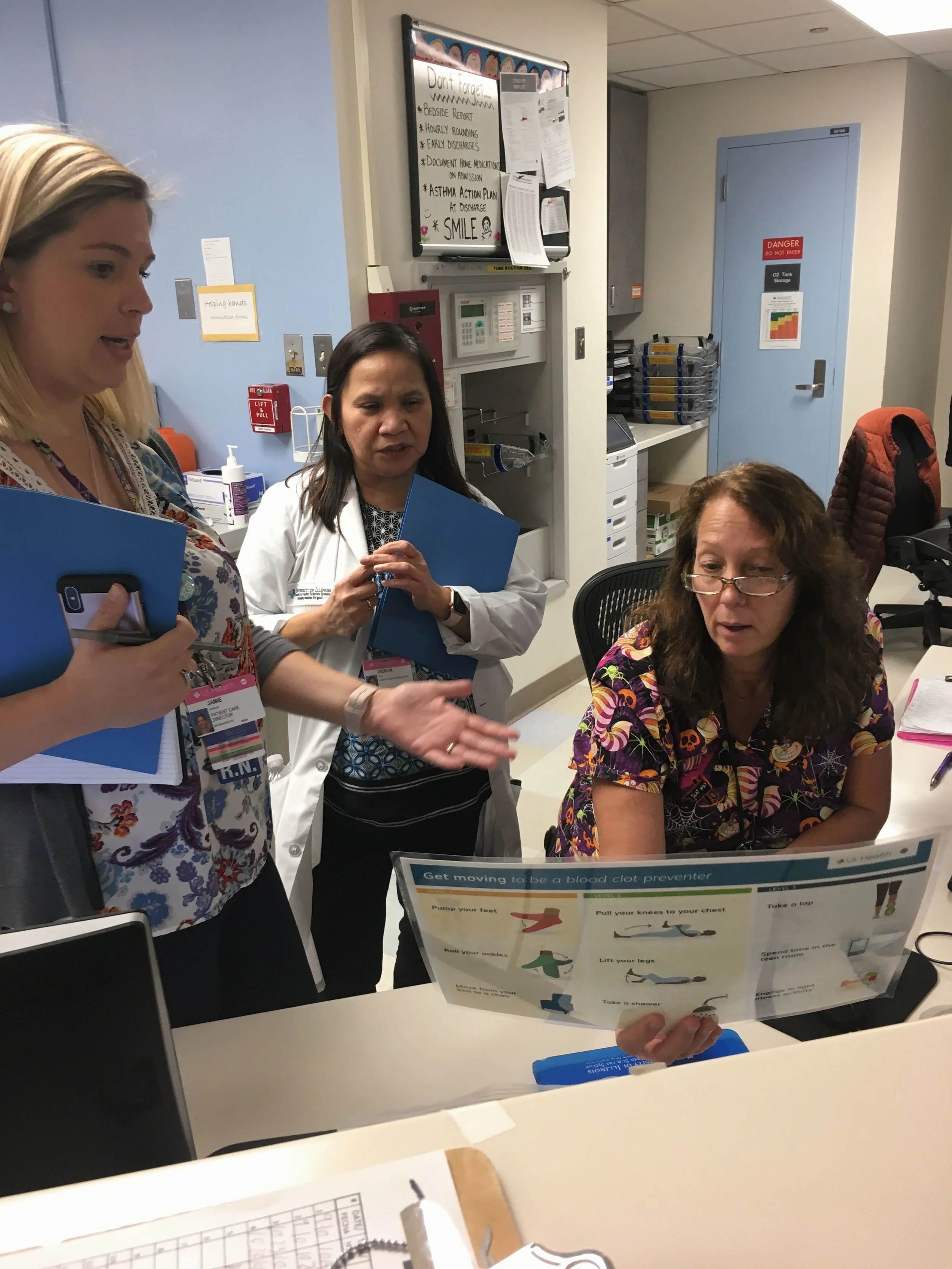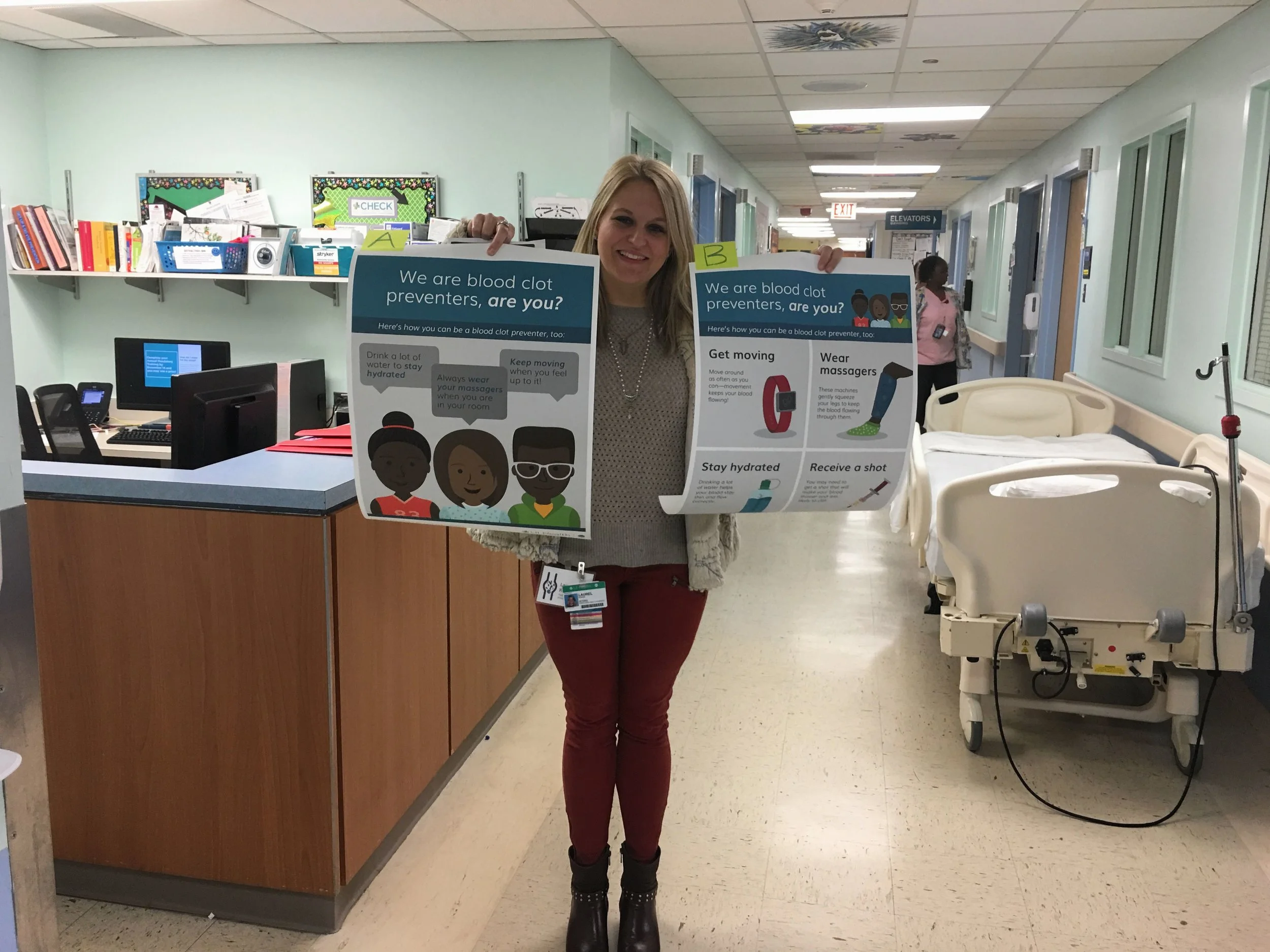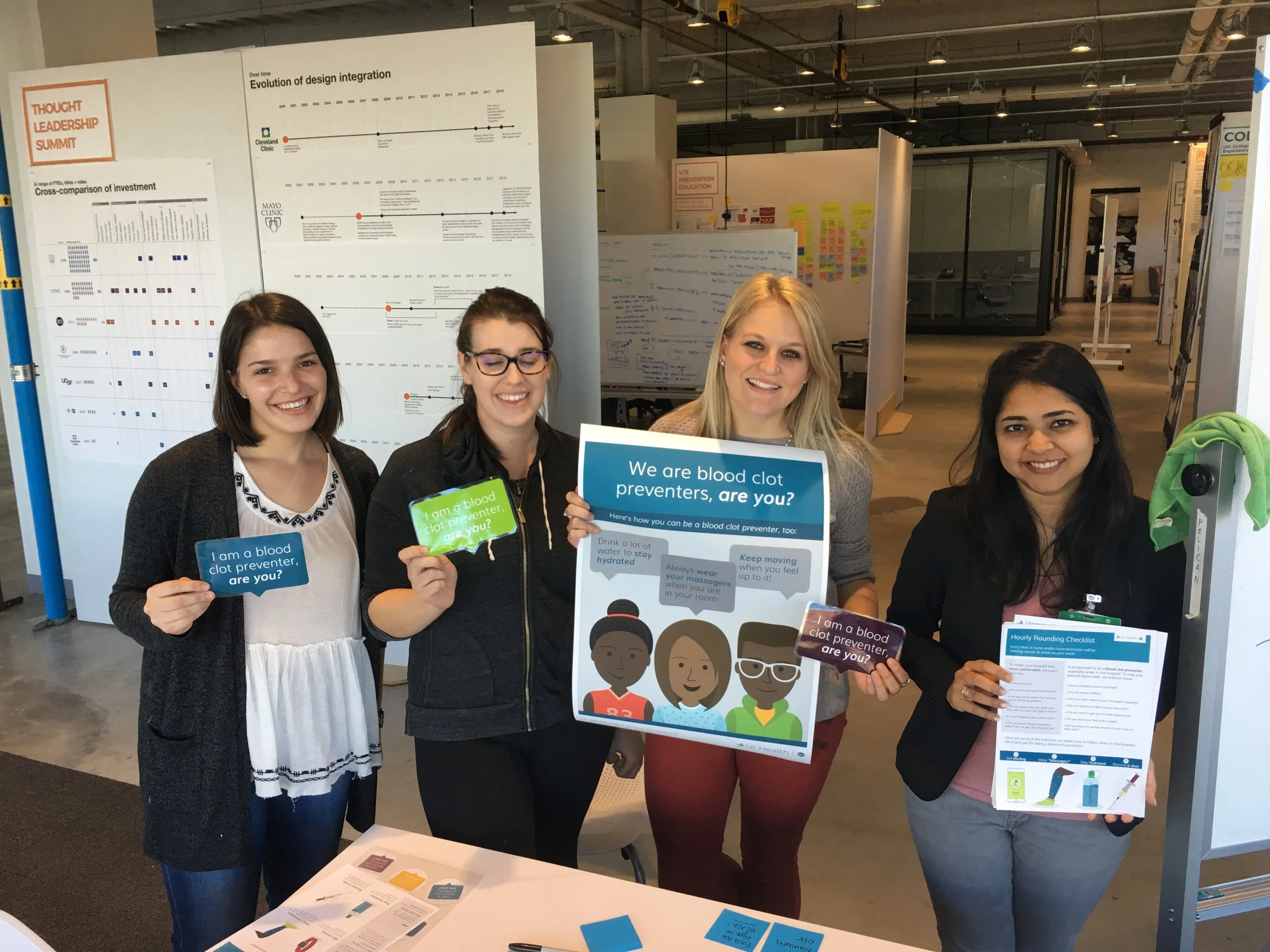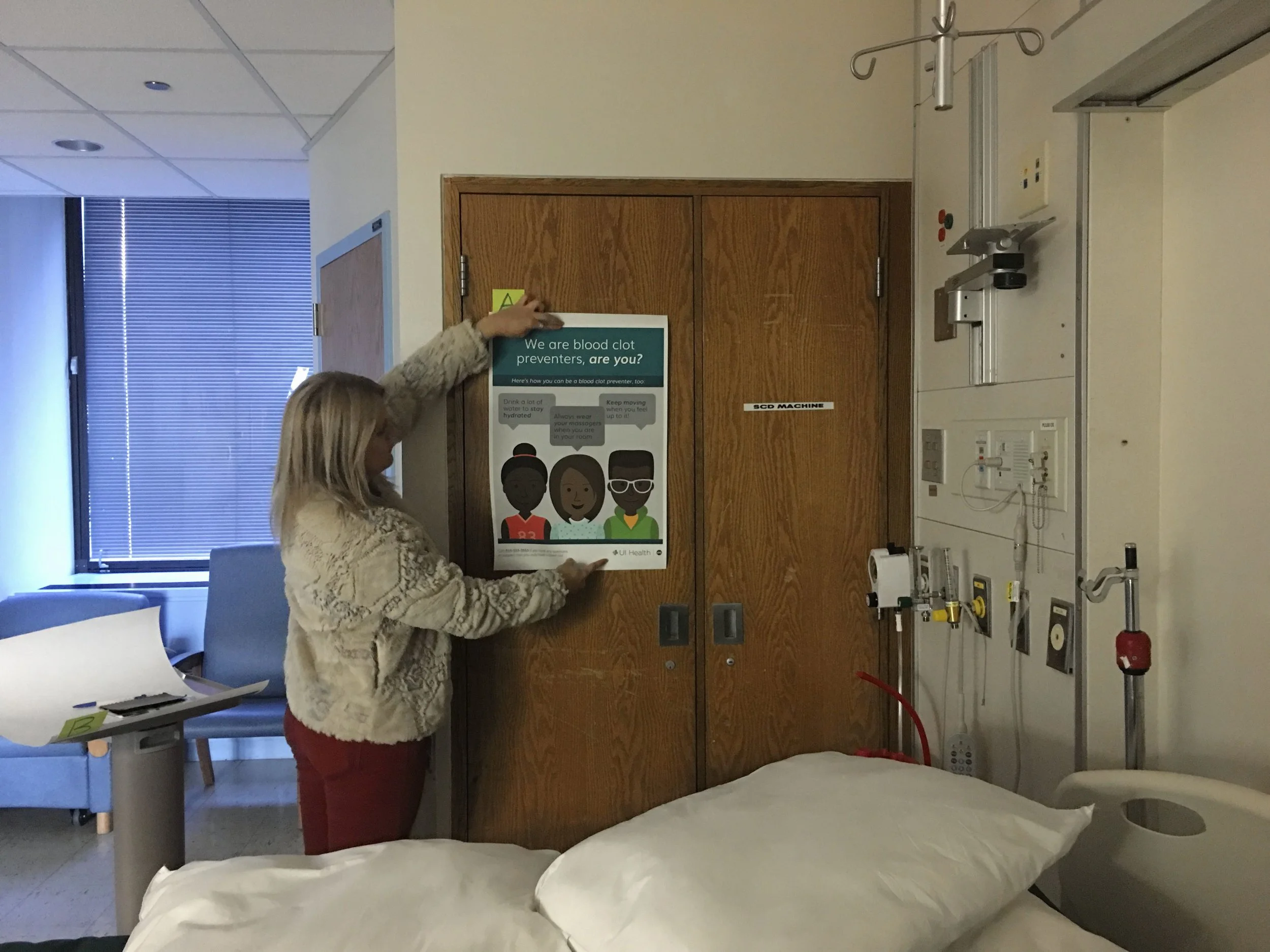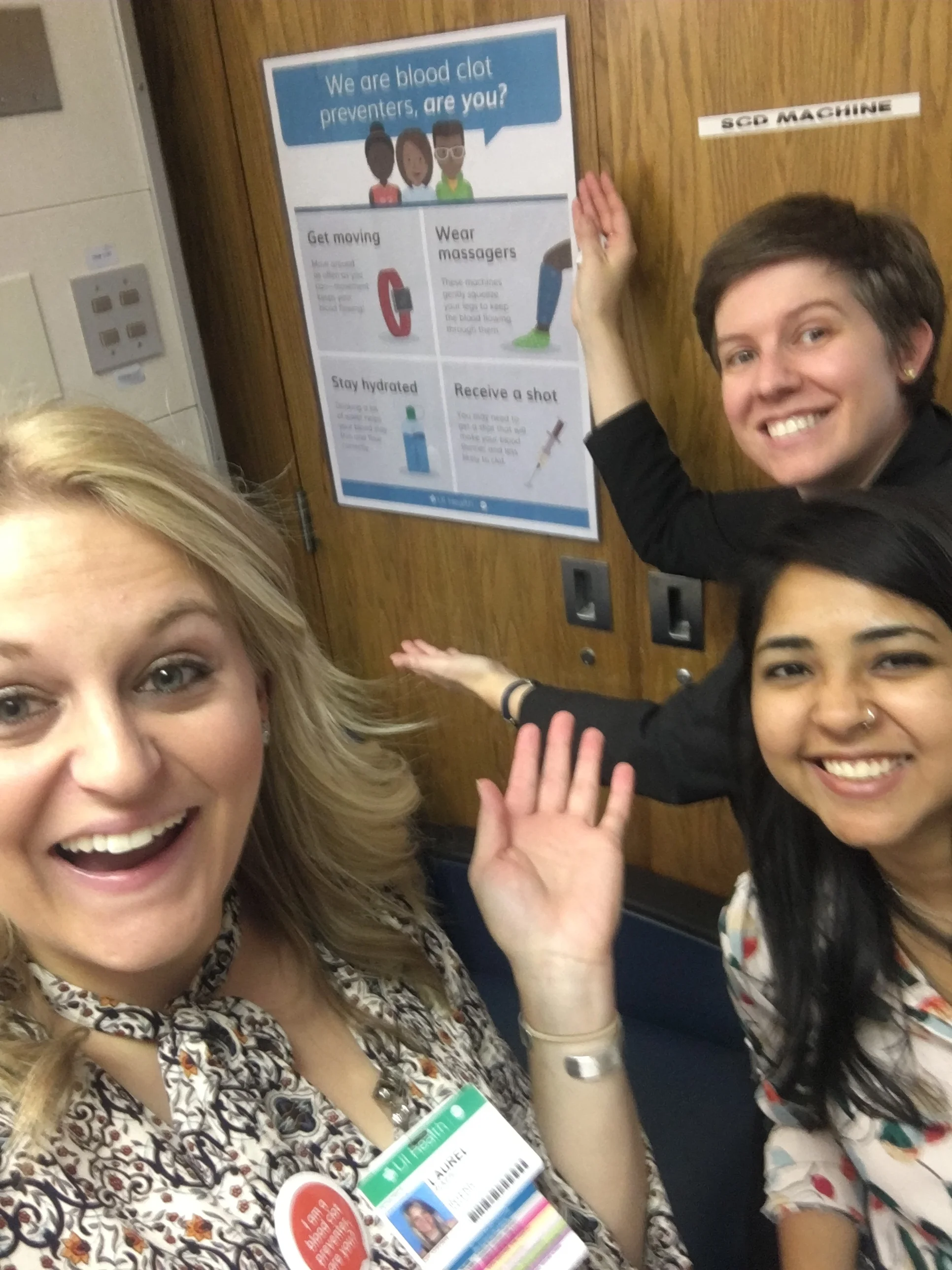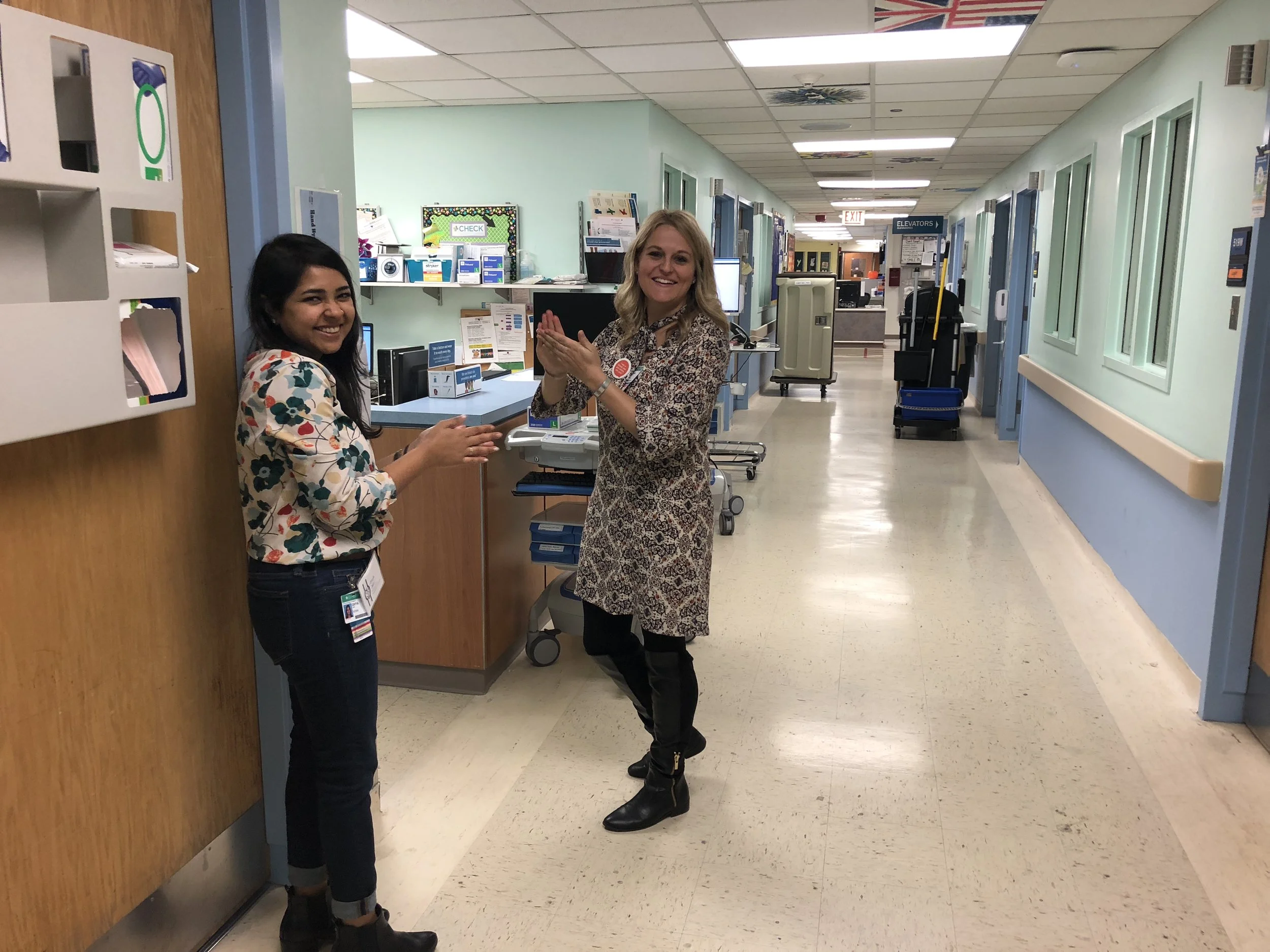Deep Vein Thrombosis (blood clots) Prevention Program
USER RESEARCH + BEHAVIORAL DESIGN
CLIENT: UI Health, 5W Pediatrics Department
IN COLLABORATION WITH: UIC Institute of Healthcare Delivery Design
GUIDED BY: Professor Kim Erwin, Sarah Norell
MY ROLE: Design Researcher/Strategist
PROJECT PERIOD: Fall 2018
Sickle Cell Disease occurs mostly among the African American and Hispanic populations. It is a genetic disorder where the sick red blood cells form a clot, resulting in excruciating pain, and sometimes death. The blood clot formation is called Venous Thromboembolism or VTE. Many people worldwide die because of preventable blood clots every year.
This project was a part of a faculty research opportunity under the guidance of Professor Kim Erwin at UIC Institute of Healthcare Delivery Design. I was one of the 3 students selected from my class to address VTE treatment adherence at the Pediatrics Ward at UI Health in collaboration with the Head of the Pediatrics Department. I worked in an interdisciplinary team with 4 medical students as well as clinical staff. The overall timeline of the project was only around 6 weeks from research to a system of pilot elements. The last few weeks were spent in testing the effectiveness of our interventions and working on the feedback from the pediatrics ward, as well as presenting to the stakeholders and various authorities at UI Health.
MY RESPONSIBILITIES:
Conducted secondary research by analyzing ~15 journals, publications, and peer-reviewed research articles. Extracted barriers and potential strategies for treatment adherence.
Conducted primary research at the pediatric ward involving ~24h in observations, 12h in doctor rounds, 7 intercepts with medical staff, 2 in-depth interviews with Sickle Cell patients, and 2 in-depth interviews with clinical subject matter experts.
Designed 7 prototypes and tested them in the field with nurses, patients, and doctors. Learning from the in-context prototyping, I helped refine the final design elements for the pilot.
Co-presented the research process and design elements to the Head of the Pediatrics department.
Piloted the design elements at the pediatric ward and gathered key metrics of the resulting impact.
Co-authored and published a report, found here.
THE IMPACT:
100% of the nurses and residents voted to keep 2 out of our 5 pilot elements after observing a significant increase in patient adherence to treatment.
With the support of pilot elements, nurses experienced 15% increase and residents 29% increase in their effectiveness to getting adolescent sickle cell patients adhere to their treatment.
Nurses also felt 36% more supported and residents 21% more supported by their unit in increasing adolescent treatment adherence.
The following results comparing the pre and post-study surveys indicate the effectiveness of the pilot elements and design interventions of my team as well as the degree of change in the feelings of hospital staff in terms of support and help in VTE prevention efforts.
1. Which materials, if any, would you like to keep before we remove pilot materials? Select all that apply
2. Self-Assessment: “I feel supported by others in my unit in helping adolescent patients adhere to VTE prevention strategies.”
3. Self-Assessment: “I am effective at getting adolescent patients to accept VTE prevention strategies.”
Phase 1: Secondary Research and Ethnographic Observations
Being unfamiliar with sickle cell as a disease, we started rigorous secondary research around the disease, ethnic groups it affected, lives of the affected population, etc to develop empathy towards our target population. We also learnt about clinical language used on the 5W Peds ward to be able to familiarize ourselves with the environment we were going to create interventions in and understand existing tools and methodologies of treatment.
Ethnographic Research Methods:
• 16 observations at ~90 minutes each
• 6 resident rounds at ~60-180 minutes each
• 12 intercepts with medical staff
• 2 in-depth interviews w/ VTE patients
• 2 in-depth interviews with clinical subject matter experts.
Phase 2: Provotyping as an iterative research approach
We applied several BEHAVIOR DESIGN principles in developing various early stage prototypes, and later on tried to consolidate the same within a larger scheme of elements to develop a campaign.
The following show some of our initial prototype concepts, even before we started conducting our primary research. This was a new method that we experimented with-PROTOTYPING AS A MEANS OF CONDUCTING RESEARCH. With this approach, we called these elements as provotypes - provocative prototypes that we took into the field to provoke reactions among stakeholders. This helped us realize early concepts and design principles.
Here are some of the elements of our provotypes that we took into the field as an artifact of provoking reactions and generating rich conversation with the stakeholders. We constantly came back and refined the elements of our provotypes and tested it again. After a few iterations, we finally moved to creating a system of elements that worked best with the stakeholders involved.
Initial Provotype Elements
Our team testing pilot elements at the 5W Pediatrics Ward at UI Health
“Nurses are like moms, they keep nagging.”
“[Mobility is] hard to measure and validate.”
“Adolescence isn’t a good time for anything.”
KEY LEARNINGS:
Through the intense research and analysis, we boiled down the collected data into six actionable insights. Working on these, we went on to develop design principles that reflected in the pilot elements.
The pictures on the right show the sickle cell patients (an adult and an adolescent) that we interviewed to gather insights about their life as an adolescent and what it was like to grow up having this disease. We got to hear some very interesting stories that helped generate empathy towards this population.
Difficult age group, tired of their disease
Lack of standards for measuring movement and other VTE prophylaxis
Practice variation between clinicians in promoting/enforcing VTE prophylaxis
Nurses bear the burden in promoting VTE prophylaxis with patients
Clinicians already have a lot to do
Patient rooms are challenging environments to design for
Phase 3: Pilot Implementation
Within 6 weeks, we conducted research, developed and refined prototypes and came up with a campaign that we actually piloted in the pediatrics ward. Our pilot elements have received mostly positive reactions, with more adolescents complying to VTE treatment.
DESIGN PRINCIPLES
Providing Agency and Choice to the patients with Flexible and Adaptive elements
Providing Workflow Fit to the clinicians to be able to work with Shared Priority
FROM CHALLENGES TO DESIGN PRINCIPLES
A SYSTEM OF PILOT ELEMENTS
Mobility Menu: agency and choice to the patients
Patient Education Tool: Making blood clots tangible for adolescents particularly
Poster: in-room behavioral nudge for patients and a conversation point for clinicians
Badges + Buttons: “social norming” to encourage blood clots prevention as a campaign
“Patients are starting to ask the nursing staff when they need to put on their massagers or go for a walk around the ward. The materials—especially the poster—really have made a difference!”
